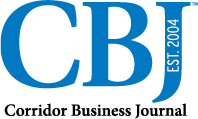Five Corridor companies receive SBA loans in November
CBJ News Staff
JUL 5
Imagine if 25% of your workforce quit tomorrow. Labor statistics and numerous surveys point to one thing — a significant portion of employees are ready to give notice. Dubbed the Great Resignation, this wave of departures is sweeping across virtually every industry.
> There were more than 9 million open positions as of April, which puts the job opening rate around 6.2%…

Get immediate, unlimited access to all subscriber content and much more.
Learn more in our subscriber FAQ.
Do you want to read and share this article without a paywall?
